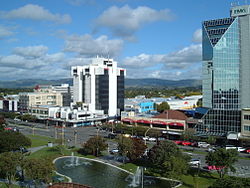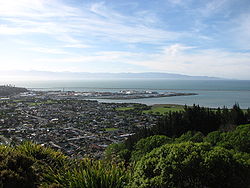The word city took on two meanings in New Zealand after the local government reforms of 1989. Before the reforms, a borough that had a population of 20,000 or more could be proclaimed a city. [1] The boundaries of councils tended to follow the edge of the built-up area, so there was little difference between the urban area and the local government area. In 1989, the structure of local government in New Zealand was significantly reorganised. Almost all the new district councils and city councils were much larger in land area, and they covered both urban land and the surrounding rural land. Many locations that once had a "city council" are now governed by a "district council". Since 2002, an urban area must have at least 50,000 residents to be proclaimed a city. [2]
Contents
- Urban areas by population
- Urban areas based on 2018 standard
- Functional urban areas (metropolitan areas)
- City councils
- Populations of present-day city (and Auckland) councils
- History of cities
- Letters patent
- Electorates
- City councils 2
- Summary of claims as New Zealand's first city
- Cities, 1877 to 1989
- See also
- Notes
- References
- External links
The word city is used in a general sense to identify the urban areas of New Zealand, independent of local body boundaries. This informal usage is jealously guarded. The district government of the town of Gisborne, for example, adamantly described itself as the first "city" in the world to see the new millennium. Gisborne is governed by a "district council", though its status as a city is not generally disputed in New Zealand. Similarly, there is no "city council" in Auckland, though its status as a city is not generally disputed due to its considerable size.
Listed below are the large urban areas referred to colloquially as "cities".




















